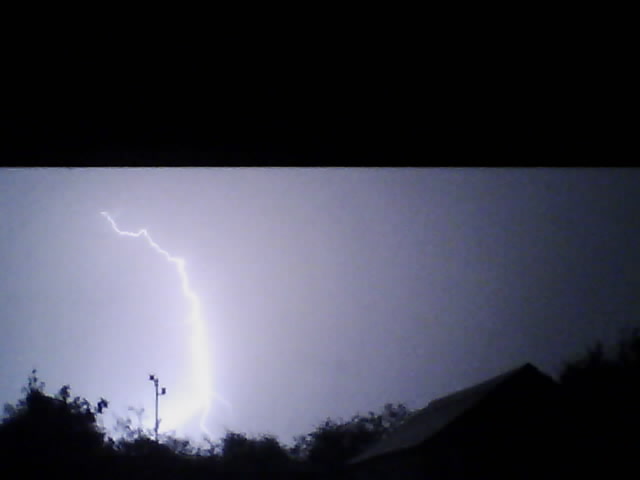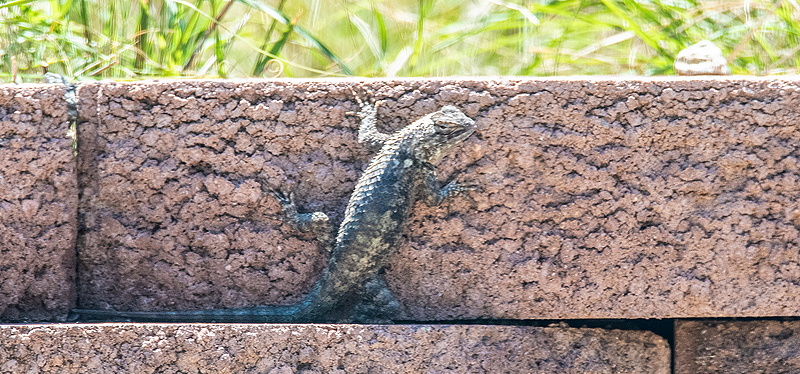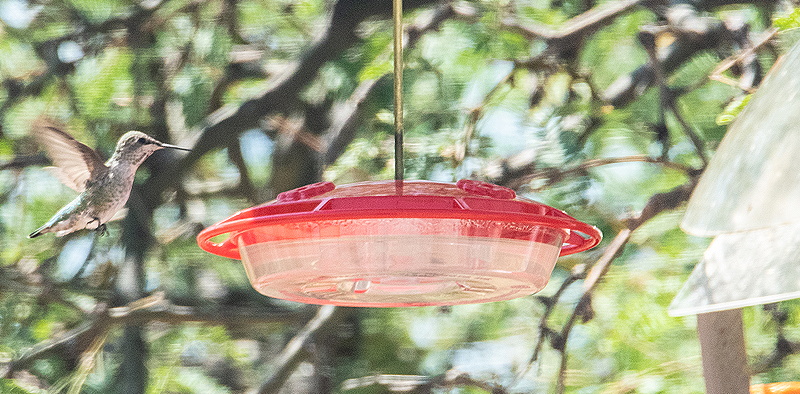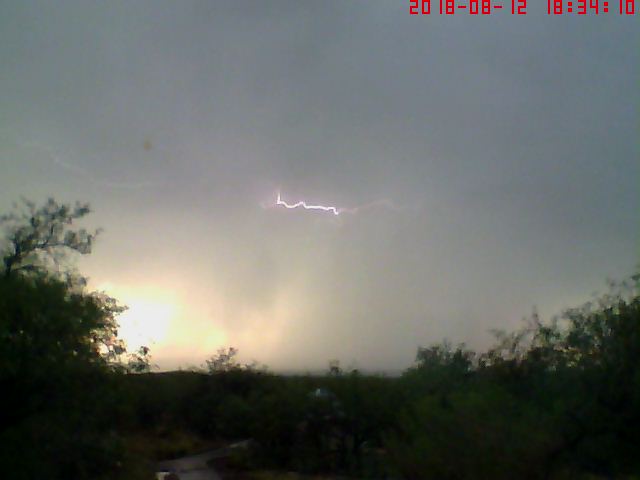Rainbows, Lightning, Rain, Critters, but no Perseid Meteors;
D850 Mars & Saturn imaging
Posted: 28 August 2018
Tuesday, 7 August 2018, dawned clear but Monsoon storm clouds began appearing mid-afternoon. A storm came through late afternoon with 0.28" in about 30 minutes. After the rain ended this lovely double rainbow appeared:

Click or tap on image for larger version
A couple of hours after sunset there were thunderstorms in the area. One of my webcams captured some lightning:

Wednesday, 8 August, and Thursday, 9 August, were cloudy. More storms were in the area overnight Thursday and early Friday morning, 10 August (0.05" rain). More lightning captured on the webcams:



Late Friday afternoon a severe thunderstorm come through that dropped over 0.5" rain in less than 15 minutes, with a storm total of 0.8", and some pea-sized hail and strong wind.

Rain gauge shows 0.85", which includes the 0.05" rain from early Friday morning.
Saturday morning, 11 August, I checked on the observatory after Friday's severe thunderstorm. No issues and no leaks. Of course, none were expected.
Saturday evening there was another double rainbow:

About sunset there was some brief rain (0.01"). Just before mid-night another severe storm came through (0.27" rain), followed by a second severe storm shortly after mid-night, Sunday, 12 August (0.59"). There was a lot of lightning from these storms:






It was raining so hard that the lightning was dimmed down.
Sunday, 12 August, dawned mostly clear, giving some (false) hope that it would be clear that night. Had a couple of visitors:


Clouds began appearing early afternoon and a strong thunderstorm began approaching about 90 minutes before sunset:

There was a lot of lightning, wind, and a continuous "roaring" overhead as the storm came through. It only gave us 0.2" rain though. One of the webcams captured some of the lightning:


The sky was cloudy Sunday night. Consequently, I missed seeing any meteors from the Perseid Meteor Shower.
Monday, 13 August, dawned mostly clear but as is typical during Monsoon Season, the sky began clouding up early afternoon. It did clear as sunset approached but the sky was very hazy. However, I did not open the observatory that night as I was leaving on a trip on Tuesday, 14 August. I returned on Sunday night, 26 August. Most nights while I was gone were cloudy/stormy. A total of 0.9" rain was received from six storms during my absence.
Monday, 27 August, began clear with a clear sky forecast for the night, but turned partly cloudy mid-day. Since I haven't been in the observatory much this summer due to cloudy nights and travel, I decided to open up.
|
Open: Monday, 27 August 2018, 1843 MST Temperature: 78°F |
Session: 1269 Conditions: Partly cloudy |
Equipment Used:
12" f/8 LX600 w/StarLock
2" 24mm UWA eyepiece
2" 4X Powermate
Camera:
D850 DSLR
1854 MST: sunset.
SYNCed observatory clock to WWV time signals. Then added the CHU time signals station to the observatory shortwave radio. I did this as WWV may stop broadcasting time signals in 2019.
1908 MST: LX600 ON, StarLock OFF, High Precision OFF.
Viewed Venus, 102X and 406X. A slightly less than half-phase was visible. Then viewed Jupiter, 102X and 406X. Four moons were visible. Next viewed was Saturn 102X and 406X. Titan was visible; the sky was too bright for the fainter moons to be visible. Viewed Mars, 102X and 406X. The South Polar Cap and the North Polar Hood were easily seen, even though seeing was not ideal. There was a hint of a dark surface feature visible. The dust storm seem reduced from my previous view.
Mounted the D850 DSLR at prime focus + 4X Powermate for planet imaging.
Saturn, 1080p, 60fps, DX, 1/100sec, ISO 5000, stack of 425 video frames:

Saturn, single image (cropped), 1/60sec, ISO 5000:

Saturn and 6 moons (cropped single image), 1 second, ISO 6400:


The same surface features I saw visually are also visible in the above image.
Mars, single image (cropped), 1/160sec, ISO 1000:

2012 MST: the eastern sky was brightening from the rising waning gibbous Moon.
2019 MST: LX600 OFF.
|
Close: Monday, 27 August 2018, 2031 MST Temperature: 77°F |
Session Length: 1h 48m Conditions: Partly cloudy |
While I was gone Cassiopeia Observatory had its 9th anniversary of "First Light" on 18 August.
For those who haven't heard, OPT in Oceanside, California, is moving to a larger facility! It will still be known as "OPT" even though they will no longer be in Oceanside.
Sander Berents, developer of the Observatory application I recently reviewed, was interviewed by The Mac Observer. Have a listen to learn more about Sander and his application.
Comments are welcome using Email. Twitter users can use the button below to tweet this report to their followers. Thanks.
Cassiopeia Observatory Home Page
Copyright ©2018 Michael L. Weasner / mweasner@me.com
URL = http://www.weasner.com/co/Reports/2018/08/28/index.html
